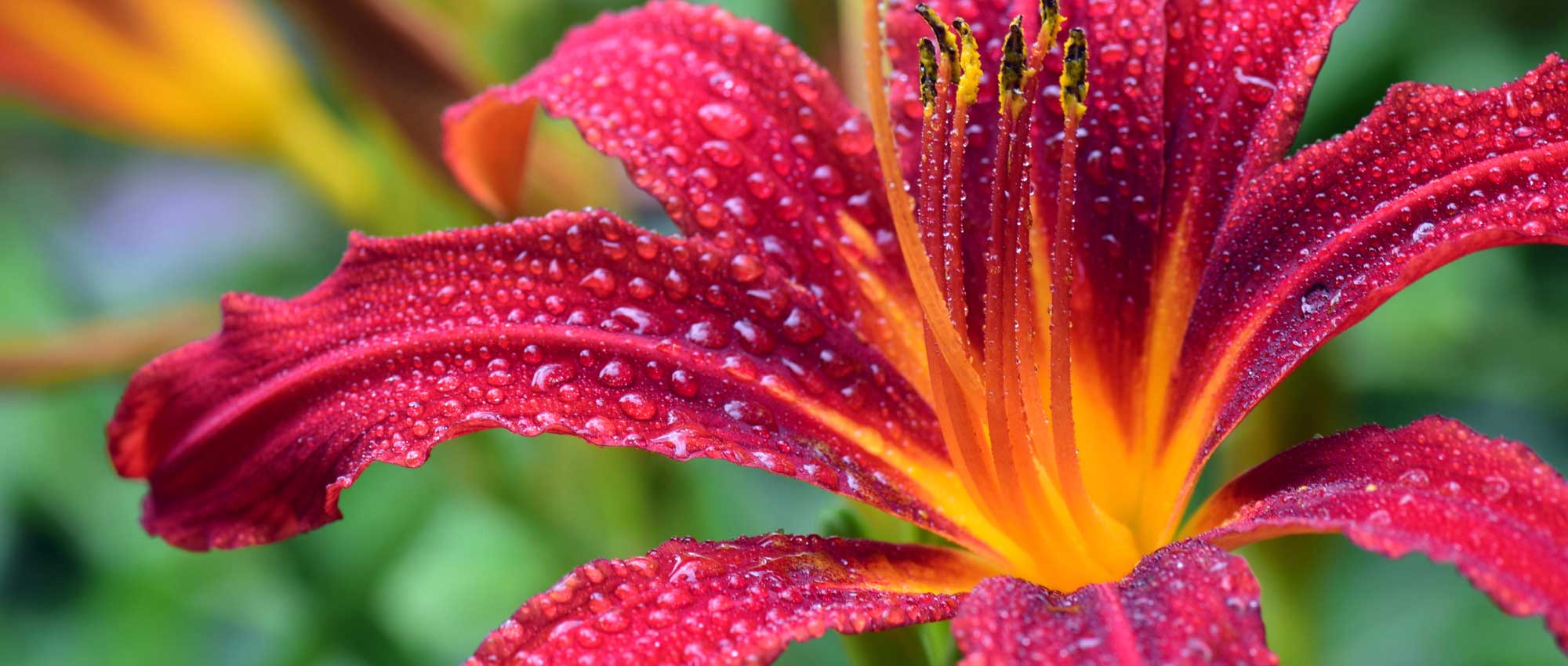
Daylily: planting, cultivation, division and maintenance
Contents
Daylily in a nutshell
- Daylilies produce large flowers in warm and vibrant colours during summer
- Very easy to grow, they require little maintenance and live for a long time
- The thousands of varieties offer an incredible range of shapes and colours
- Flowers can be single, double, trumpet-shaped, rounded, triangular…
- Their flowers and flower buds are edible
A word from our Expert
Also known as Day Lilies, hemerocallis are essential perennials, valued for their generous flowering, large and very colourful blooms, their long and slender foliage, and their habit of forming ample, voluminous clumps… The most common are the hemerocallis with orange or yellow flowers, but there are thousands of varieties, available in a very wide colour palette, generally featuring bright shades! Hemerocallis can be quite large, but there are dwarf varieties, such as ‘Stella de Oro’, which are suitable for pot or container cultivation… And to top it all off, their flowers are not only beautiful but also edible!
Hemerocallis is an easy, long-lived perennial, almost indestructible. It is vigorous, fairly hardy, and can thrive in the garden for years. It is propagated by division of clumps. It requires little maintenance, perhaps just a few waterings and prunings. It is an ideal perennial that does not disappoint!
Description and Botany
Botanical data
- Latin name Hemerocallis sp.
- Family Xanthorrhoeaceae
- Common name Daylily
- Flowering summer
- Height between 30 cm and 1.20 m
- Exposure sun or partial shade
- Soil type rich, cool, well-drained
- Hardiness around -15 °C
Daylilies are spectacular summer-flowering perennial plants. They are native to the east of Asia, particularly China, Japan, and Korea, but also grow in Mongolia and northern India. They can be found in the wild in wet meadows or marshes, along riverbanks, at forest edges, and in mountains up to 3,000 metres in altitude. There are about twenty species of daylilies in nature. They have been extensively hybridised since the early 1930s, mainly in the United States, and today there are over 80,000 horticultural varieties. They are very popular due to their large, impressive, and highly colourful flowers, and their broad habit, forming large clumps of long, narrow leaves is also appreciated. The daylily is sometimes referred to as the “perfect perennial”! It is a reliable, very easy, perennial plant, and quite hardy.
Although mostly horticultural varieties are found, a few botanical species are cultivated in gardens, notably Hemerocallis lilioasphodelus (syn. H. flava), Hemerocallis citrina, and Hemerocallis fulva. The latter is a fairly popular species, with its large reddish-orange flowers, and it sometimes naturalises in gardens!
Their name comes from the Greek ἡμέρα (hēmera): day, and καλός (kalos): beauty. Therefore, it could rightly be called “Beauty of a Day”. Moreover, they are commonly referred to as Daylilies (in English as well)! These names were given because their flowers last only one day; and they resemble those of the Lily. They are also sometimes called Perpetual Lilies.
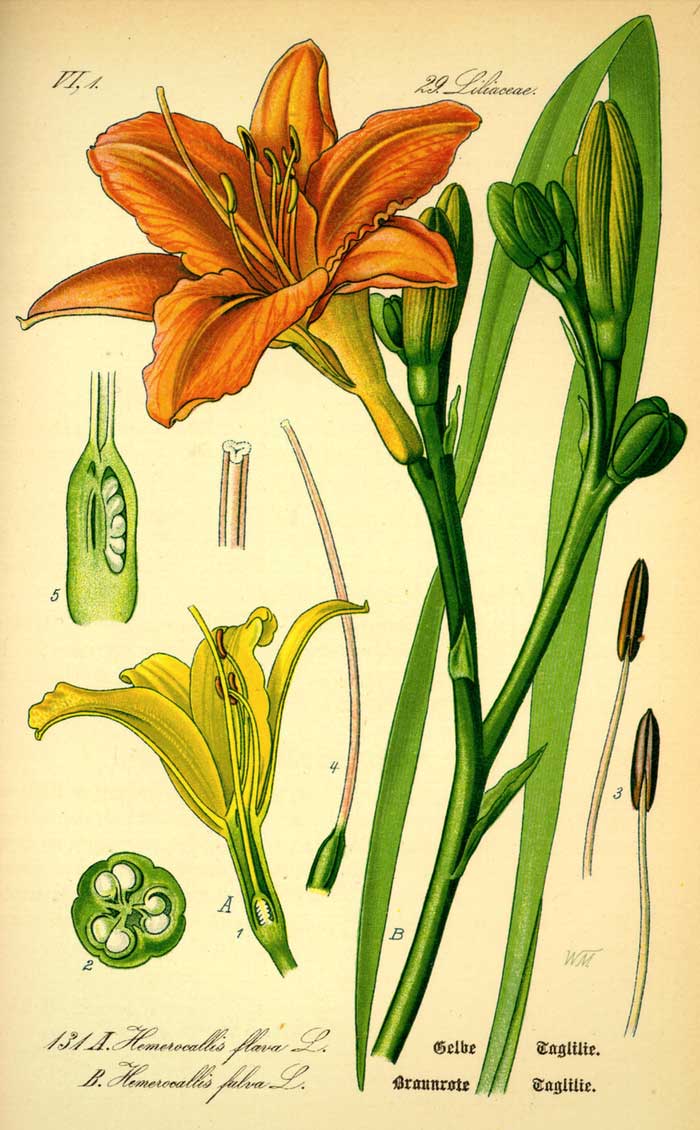
Hemerocallis flava (syn. H. lilioasphodelus) and Hemerocallis fulva: botanical illustration
Daylilies are now classified in the family Xanthorrhoeaceae, along with other rather exotic plants (often from the southern hemisphere), including Aloe, Eremurus, Kniphofia, and Phormium. However, daylilies were previously among the Liliaceae, with true Lilies. They are monocotyledonous plants, like grasses or orchids (leaves with parallel veins, flowers often with three petals and three sepals…).
Daylilies are perennial plants that have a good longevity, living for about ten years. They have vigorous growth, establish quite quickly… They form large, broad clumps. There are dwarf varieties, the smallest measuring only 30 cm tall (like ‘Stella de Oro’)… While other varieties are much larger, reaching up to 1.20 m (Hemerocallis citrina, Hemerocallis fulva…)! The average height is around 70 cm.
Daylilies bloom in summer, often in June-July. However, there are early varieties, such as Hemerocallis lilioasphodelus, blooming in May-June… And others, late bloomers, flowering from mid-summer, around early August, even until September. This is the case for the variety ‘El Desperado’. Overall, the flowering of daylilies does not last very long, often about a month. But some have the advantage of being reblooming (Hemerocallis citrina…)! Similarly, you can combine different varieties, early and late, to enjoy them for longer!
The flowers last only one day, opening in the morning and wilting in the evening… But they are followed the next day by others, so the flowering renews continuously! In most varieties, the flowers are diurnal, blooming for one day. Note, however, that a few species are nocturnal.
Daylilies produce upright flower stalks, often branched, without leaves, each bearing several dozen flowers (or buds). These consist of six tepals (three petals and three sepals, having more or less the same appearance), marked by a central vein, often lighter. In the centre, the flower bears six long stamens, decorative. They are usually coloured in shades of yellow, orange, or red, and their anthers (the tip that carries the pollen) are often darker. The flower also has a long pistil (female reproductive organ). The flowers are therefore hermaphroditic, possessing both male and female organs.
Daylilies are among those plants that offer large and impressive flowers, in bright colours, that stand out immediately in borders! Their flowers resemble those of the Lily. That is why they are often called “Daylilies”. There are thousands of varieties, resulting in an impressive diversity in shapes and colours!
Although the flowers are quite large, their size varies between varieties: the smallest measure less than 7 cm, while the largest exceed 15 cm in diameter (up to 25 cm at most). When viewed from the front, they can have a star-shaped form, with fairly thin petals, or be rounded, with much wider petals. They can also be triangular, the shape being given by three well-developed petals. Other times, the petals are very long and thin, spreading out, giving the flower a spider-like shape (daylilies “spider”). The flowers can be trumpet-shaped, with the corolla forming a long, narrow, flared tube. Sometimes, the petals are wavy, crumpled, which adds relief to the flower. They can also be recurved, bending backwards. Although the flowers are often simple, with six petals, there are varieties with double flowers, with a large number of petals, in several rows.
Daylilies are appreciated for their flowers in often warm shades: yellow, orange, red – sometimes pink, purple, violet, chocolate brown… They can be very dark, like those of the variety ‘American Revolution’… Conversely, they can also be white. However, there are no daylilies with blue flowers! It is very common for the flowering to be bicoloured, with the throat of the flower often being yellow, lighter than the petals. The bright flowering of daylilies brings dynamism to the borders!

The flowering of daylilies is varied, both in shapes and colours! Hemerocallis ‘Jungle Beauty’ (photo F.D. Richards), Hemerocallis fulva ‘Flore Pleno’, Hemerocallis ‘Siloam Merle Kent’ (photo F.D. Richards) and Hemerocallis ‘Tigereye Spider’ (photo James Steakley)
The colours can create very beautiful patterns on the flowers! Sometimes, they form an eye, with a darker colour in the centre, and lighter on the outside. Sometimes, it is the edge of the petals that is highlighted by a fine darker border. It is common for a lighter central vein to stand out in the centre of the petals. Some varieties have half of the petals in one colour, and the other half in another! This is the case, for example, with ‘Frans Hals’.
Some species are pleasantly fragrant! Hemerocallis citrina releases a delicate lily of the valley scent.
Daylily flowers have the advantage of being edible, perfect for decorating salads or desserts, for example! For this use, the best variety is ‘Buttercup’, with a delicately sweet flavour.
The diversity in shapes and colours is truly impressive. From the most extravagant varieties to the simplest and most natural forms, there is something for everyone! The varieties have very different styles, and the effect brought to the garden will not be the same, depending on whether it is a daylily with double flowers, trumpet-shaped flowers, spider-like, with crumpled and rounded petals, or smooth and very thin…
Sometimes, small seedlings (proliferations) may grow on the flower stalk. You can collect them and plant them: they will root and produce new plants, identical to the mother plant.
The leaves of daylilies are very long and narrow, lanceolate or linear, and somewhat resemble grass foliage. They are marked by a central, longitudinal vein. The leaves measure between 70 cm and 1.20 m in length, but sometimes only 20-30 cm long in the smallest varieties.
The leaves are opposite, on either side of the stem, giving a flattened, fan-like appearance. The foliage is very flexible, standing upright and then drooping.

The foliage of daylilies! (photos Magnus Manske)
The leaves are green, sometimes light green – almost yellow, sometimes dark green, leaning towards blue. Some varieties have variegated leaves, white in Hemerocallis fulva ‘Kwanso Variegata’, and yellow in ‘Golden Zebra’. This gives the plant a slightly more exotic look!
The varieties cultivated in France are mostly deciduous, but there are also persistent or semi-persistent daylilies.
Daylilies have fibrous roots, often tuberous, quite fleshy, allowing them to store nutrients and water (thus serving as a reserve organ). The root system of daylilies is vigorous.
Daylilies form elongated green capsules, with three chambers, containing black seeds. They open when ripe. You can collect the seeds, but the resulting plants may not retain the characteristics of the original variety.

The capsules and seeds of Hemerocallis vespertina (photo Alpsdake) and those of Hemerocallis aurantiana (photo Yercaud-elango)
Read also
Daylilies: how to plant themThe main varieties of daylilies

Hemerocallis Stella de Oro - Daylily
- Flowering time June to November
- Height at maturity 30 cm

Hemerocallis Frans Hals - Daylily
- Flowering time August to October
- Height at maturity 70 cm

Hemerocallis citrina - Daylily
- Flowering time July to October
- Height at maturity 90 cm

Hemerocallis American Revolution - Daylily
- Flowering time July to October
- Height at maturity 60 cm

Hemerocallis Crimson Pirate - Daylily
- Flowering time August to October
- Height at maturity 70 cm

Hemerocallis Destined to See - Daylily
- Flowering time July to September
- Height at maturity 75 cm

Hemerocallis Apricot Beauty - Daylily
- Flowering time August, September
- Height at maturity 70 cm

Hemerocallis lilioasphodelus - Daylily
- Flowering time June to October
- Height at maturity 80 cm

Hemerocallis Snowy Eyes - Daylily
- Flowering time July to September
- Height at maturity 50 cm

Hemerocallis Neyron Rose - Daylily
- Flowering time July, August
- Height at maturity 75 cm
Discover other Hemerocallis - Daylilies
View all →Available in 3 sizes
Available in 1 sizes
Available in 3 sizes
Available in 1 sizes
Available in 2 sizes
Available in 2 sizes
Available in 3 sizes
Available in 2 sizes
Available in 1 sizes
Available in 2 sizes
Planting daylilies
Where to plant?
Place daylilies preferably in full sun or partial shade. They require at least six hours of direct sunlight per day to provide a generous flowering… In the shade, they bloom less well. If you live in the northern half of France, do not hesitate to plant them in full sun! In the Mediterranean region, you can place them more in partial shade. Full sun can tend to fade dark-flowered varieties (red, purple, chocolate…): for these, prefer a slightly shadier location.
The soil should be cool, which is why you can plant them near a pond. They do not like overly dry conditions. At the same time, daylilies need well-draining substrate; if necessary, you can improve water infiltration by adding gravel or coarse sand. They do not appreciate stagnant moisture in winter.
Daylilies enjoy rich, fertile soils. Plant them in good garden soil, to which you can add well-decomposed compost. They will thrive in loose, light, deep soil. Daylilies are fairly insensitive to soil pH, but they do have a preference for slightly acidic soils.
Choose their location carefully, as daylilies do not like to be moved! They are perfect for borders, alongside other summer-flowering perennials. They can also be planted in pots or containers. In this case, prefer dwarf, compact varieties like ‘Stella de Oro’.
When to plant?
Daylilies can be planted in the garden from early autumn (September) until spring (April – May). It is better to wait until spring if you live in a cold climate. Similarly, it is always advisable not to plant during frost periods.
How to plant?
As daylilies form large clumps of leaves, maintain a distance of at least 40 to 60 cm between plants, although this also depends on the chosen variety. We advise you to take care with the planting, as they can remain in place for years and do not like to be moved!
- Start by placing your daylily in a basin filled with water. This allows the root ball to rehydrate and ensures better establishment.
- Prepare the soil, digging at least 30 cm deep. Loosen the soil and add some well-decomposed compost.
- Dig a planting hole about three times the size of the root ball.
- If your plant is bare-rooted: you can place a little fine potting soil at the bottom of the planting hole to create a small mound, then place the plant on top, spreading the roots around the mound of soil. Otherwise, remove the root ball from its pot and simply place it in the planting hole. The collar should be level with the soil, or very slightly below (no more than 3 cm below…).
- Replace the soil around the plant and firm it down.
- Water
Continue to water regularly in the weeks following planting. It is also advisable to apply an organic mulch around the plant, as this prevents water from evaporating and thus keeps the soil cool for longer.
Most daylilies will bloom in the first year.
You can also plant them in pots, but choose a large enough container… Especially since once established, they do not like to be disturbed! Do not plan to repot them too often.
Also, discover our advice sheet on planting daylilies and our advice sheet Growing a daylily in a pot
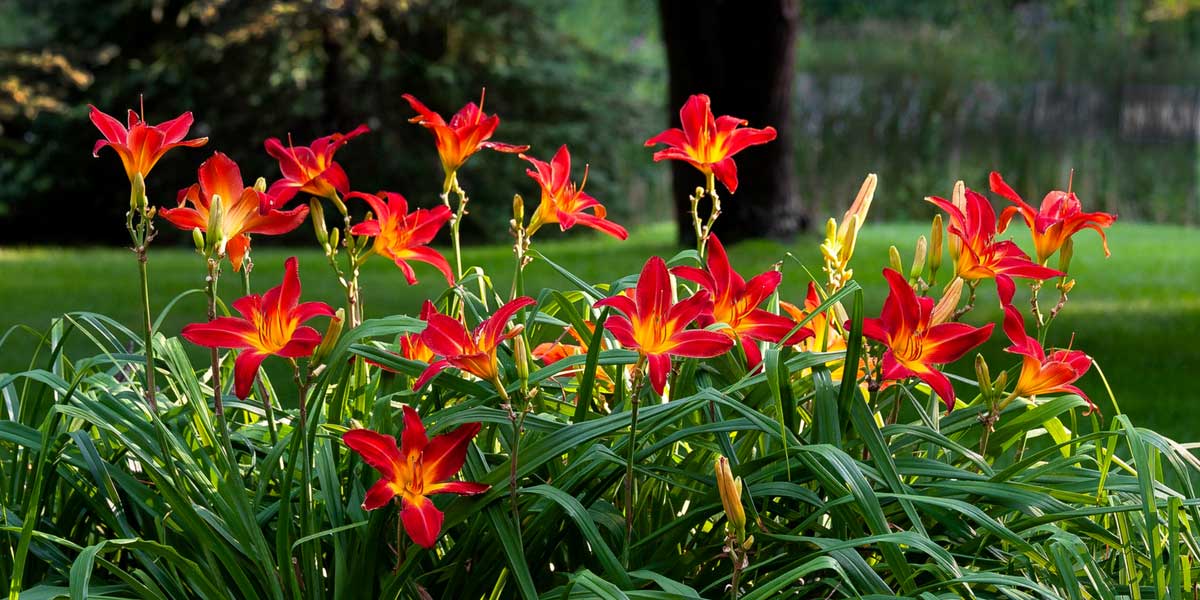
Care of daylilies
Daylilies are long-lived, hardy, and reliable plants. They require relatively little attention and do not specifically need to be protected from the cold in winter.
As they prefer cool soils, daylilies may require watering in spring (especially during the formation of flower buds) and in summer. Be particularly vigilant during the first year (but water without excess…). A cool soil will ensure a more beautiful and generous flowering!
We recommend applying a layer of mulch (such as dead leaves, wood chips…) to keep the soil cool for longer and to prevent weeds from growing.
It is always best to cut faded flowers, as this encourages the plant to produce new ones to replace them. Similarly, when a flower stem has completely faded, you can cut it back to the base… unless you wish to collect the seeds!
Although it is not obligatory, we suggest that at the beginning of spring, you apply some well-decomposed compost around the clump. This will enrich the soil and nourish the plant, allowing for good growth and beautiful flowering. You can also use crushed horn or seaweed. Avoid nitrogen-rich fertilisers, which would promote foliage rather than flowers.
In summer, after flowering, we advise you to cut back the plant by trimming the leaves and old flower stems. This encourages the plant to produce new leaves and to flower again. At the beginning of spring, you can tidy up the clumps by cutting back the foliage once more.
Diseases and Pests
Daylilies are sometimes attacked by gall midges (Contarinia quinquenotata). The adults lay their eggs in the flower buds, and then the larvae develop by consuming the insides of the buds. These remain closed and rot, appearing to dry out. If you notice this symptom, cut and burn the affected flower buds to prevent the insect’s development.
Be cautious of slugs and snails, especially in spring, as they enjoy nibbling on young shoots! To protect your plants, you can spread sawdust or ash all around, or use slug pellets (Ferramol).
Daylilies are also sometimes attacked by aphids, which pierce the tissues to extract the sap, weakening the plant. We recommend spraying diluted black soap on the foliage. Similarly, daylilies can be affected by red spider mites and thrips. The best solution is to humidify the foliage, as these insects dislike moisture.
They can also be affected by daylily rust. This is a disease caused by a fungus (Puccinia hemerocallidis), originating from Asia, which manifests as small yellow-orange pustules on the foliage. Additionally, in cases of excess moisture (especially in winter), the roots or collar may rot. For this reason, it is important to plant in sufficiently draining substrate.
Multiplication: stump division
We advise you to propagate your daylilies by dividing the clumps, as sowing rarely produces young plants true to the original variety (But you can have fun hybridising them by depositing pollen from one variety onto the pistil of another…).
Sometimes, small seedlings appear on the flower stem. They have the ability to root and produce new plants! You can take them when the stem starts to dry out, after flowering. Cut the stem just above and below, then plant them in a pot, which you should place in the shade. Keep the substrate moist.
Dividing Clumps
We recommend dividing your daylilies every four to five years, preferably in autumn, or possibly at the end of winter (March). Avoid intervening in the height of summer during periods of intense heat.
- Identify a large clump, then dig all around it with a spade, and lift it out of the soil.
- Cut the leaves back to two-thirds of their height.
- Divide the clump into several fragments, by hand or using a knife (possibly a spade – it all depends on the size of the plant to be divided!). Each fragment should have roots and several buds.
- Prepare the soil and replant immediately.
- Water generously.
Continue watering for a few weeks, until the plants are well established. They should normally flower in the first year.
Also, check out our video tips for dividing daylilies:
Associating Daylilies in the Garden
As they come in a wide range of colours, daylilies will allow you to create stunning combinations. Those with bright colours will bring dynamism and vitality to the borders, catching the eye, while those with softer shades (cream white, pink, pale yellow…) will blend into a more romantic, delicate garden. Similarly, between those with single flowers, which are very elegant, and those with double flowers or undulate petals, which have a sophisticated appearance, daylilies can fit into very different garden styles! The size of the plant is also an element to consider: the smaller varieties can be planted at the edge or at the front of the borders, while the larger ones will find their place more towards the back or as stand-alone specimens.
With their large flowers in vivid hues, daylilies are ideal for adding a lot of colour to the garden! Use them to create a very lively bed, with other flamboyant flowers, particularly in red, orange, and yellow tones! Plant them alongside impressive blooms, such as crocosmias, gladioli, lilies, possibly with dahlias… However, be cautious with the colour combinations! Prefer harmonies (similar shades), or play with complementary colours (for example, orange and blue).
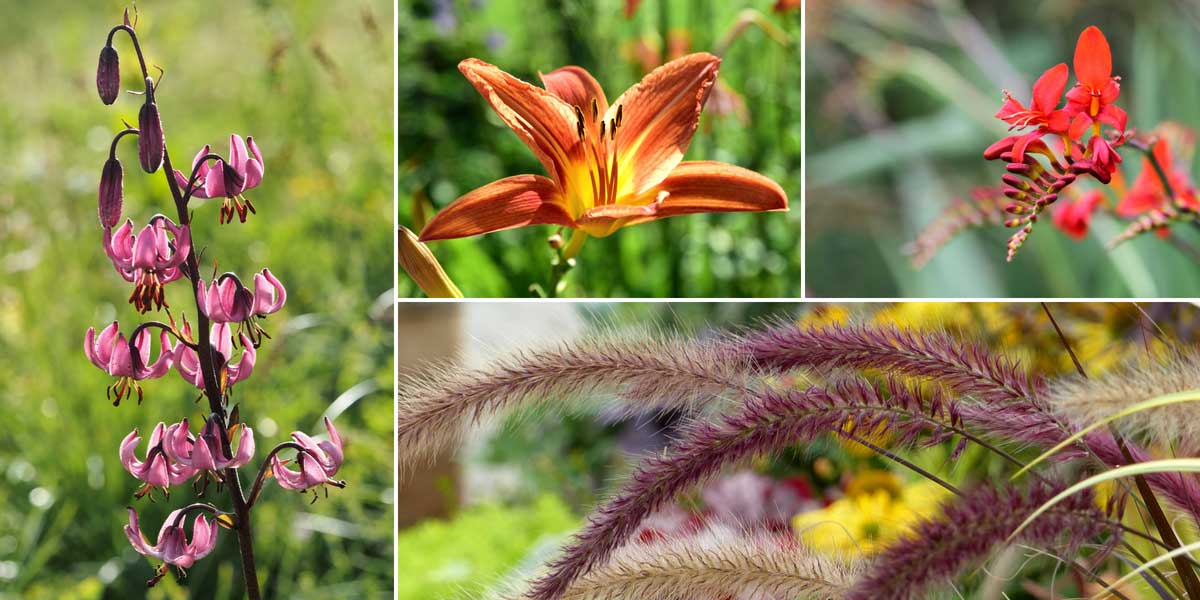
Daylilies pair very well with other colourful blooms, alongside some grasses! Martagon lily, Daylily, Crocosmia, and Pennisetum setaceum ‘Rubrum’
Daylilies prefer cool soils: thus, you can easily plant them near a pond, with Iris pseudacorus, Asian primroses, astilbes… Add plants with impressive foliage, such as gunneras, as well as ferns, for the very natural aspect they bring! Also enjoy the stunning purple flowering, very airy, of Cirsium rivulare.
As the flowers of daylilies are very colourful, you can combine them with white-flowering plants, which are more subdued, to bring a bit more lightness, while highlighting the daylilies. Enjoy Gaura, flax, campanulas, gypsophilas, and white-flowering achilleas… Choose very airy flowers and foliage, to avoid having a bed that is too “heavy” in colours, too cluttered! Daylilies pair wonderfully with grasses, such as pennisetum or calamagrostis.
In borders, daylilies also pair well with the flowering of hydrangeas, roses, and astilbes – blooms that remain quite delicate! Again, prefer softer, pastel, or white shades. Add a few foxgloves, possibly some achilleas, and a few Sanguisorba (burnet). Don’t hesitate to bring in decorative foliage, such as that of hostas, rodgersias, and ferns!
Discover more sources of inspiration in our advice sheet ⇒ Daylilies: 7 ideas for successful combinations.
Did you know?
- A edible plant!
The flowers of the daylily are splendid… but in addition to admiring them, you can also eat them! They have been consumed for hundreds of years in Asia, where they are sometimes sold in markets. The flowers and flower buds can be used raw or cooked, for example to decorate salads or desserts, or in fritters! The most interesting variety for its flavour is ‘Buttercup’! The young tubercles of daylilies are also edible, after cooking, prepared like potatoes.
Useful resources
- Discover our wide range of daylilies!
- Our video tips – Dividing Daylilies
- Our advice sheet – Daylilies: how to plant them
- Our advice sheet – How to create a beautiful perennial bed?
- Our advice sheet – 7 yellow-flowered daylilies to brighten your beds
- Our advice sheet – Growing a daylily in a pot
- Our advice sheets: 7 red daylilies; 7 pink daylilies; 7 yellow daylilies
- Our advice sheets: 7 daylilies for a naturalist garden; 7 daylilies for a romantic garden; 7 daylilies for an exotic garden
- The website of the American Daylily Society (in English)
- Our advice sheet: Choosing a Daylily
- Our advice sheet: 6 fragrant daylilies
- Our advice sheet: 7 dwarf daylilies for borders
- Our advice sheet: Collection of daylilies: our most beautiful varieties
Frequently asked questions
-
Flower buds are drying out but not opening! Why?
Your daylily is likely being attacked by gall midges. These are small insects that lay their eggs in the flower buds, and the larvae, as they develop, gnaw at the inside. As soon as you spot this problem, cut and burn the affected flower buds!
-
The foliage of my daylily has small yellow pustules.
It is affected by daylily rust, a cryptogamic disease caused by a fungus. This weakens the plant, and the flowering becomes less abundant. If you notice this disease, we advise you to place a large plastic bag over the plant, then cut the foliage below (near the soil), and remove the bag (do not compost it!). This will prevent the spread of spores, as this disease spreads quickly! You can also spray a sulphur-based solution.
-
The flowering is a bit weak, not abundant... Why?
Perhaps your daylily is placed in too dense a shade, which reduces its flowering... It needs at least six hours of direct sunlight per day to bloom well! This may also be due to an excess of fertiliser, which promotes foliage at the expense of flowers. It is also possible that your daylily has experienced a situation that was too dry, particularly in spring when the flower buds are forming. Otherwise, consider dividing your clumps of daylilies to rejuvenate them!
- Subscribe!
- Contents
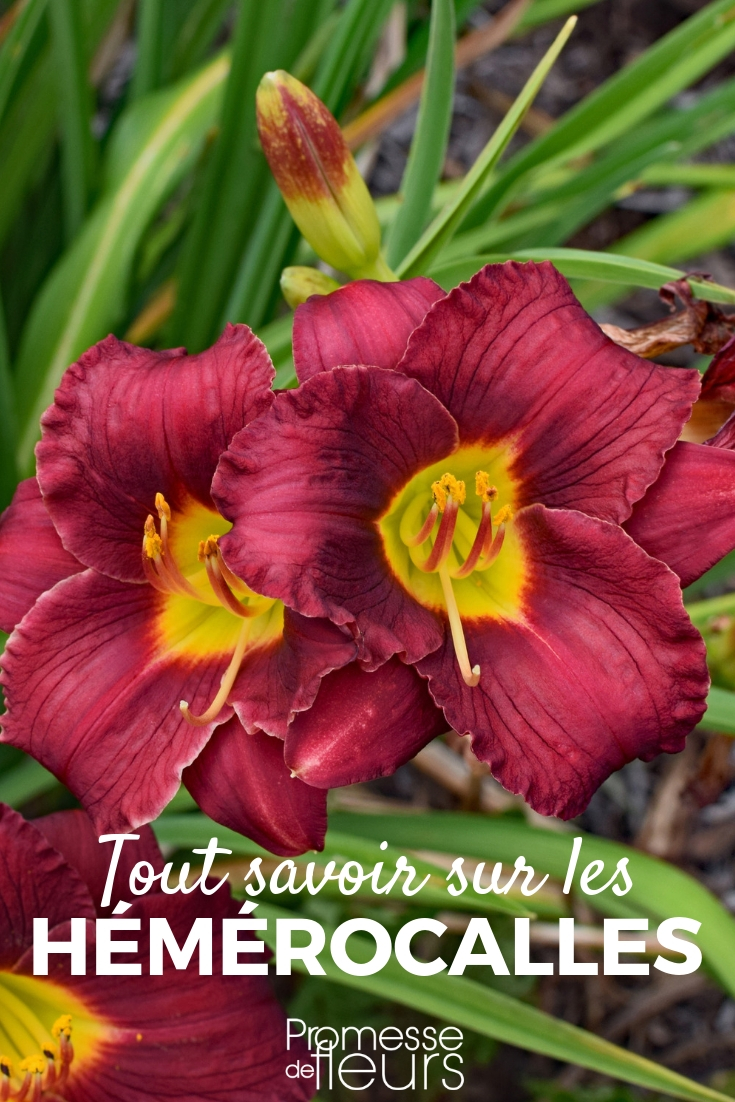































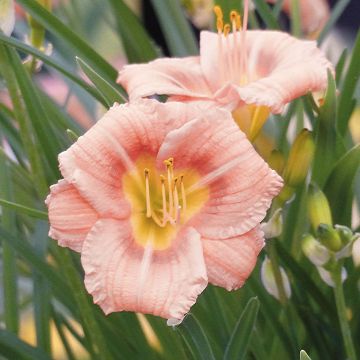
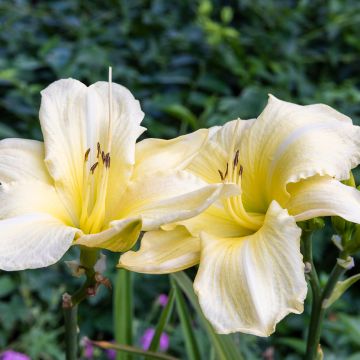
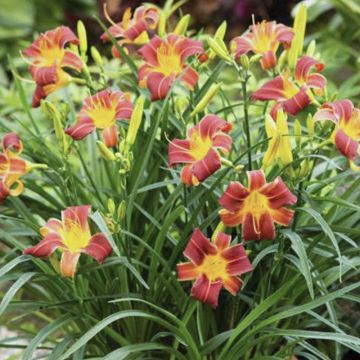
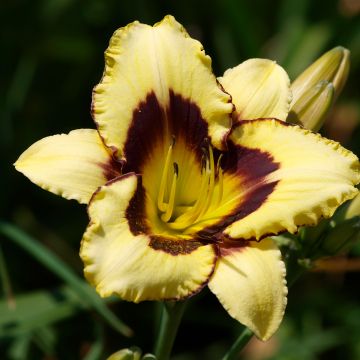
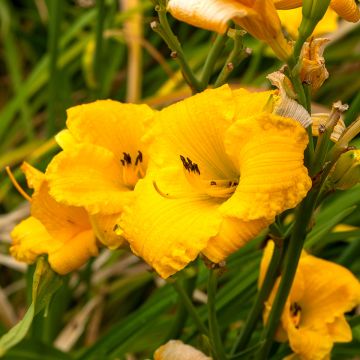

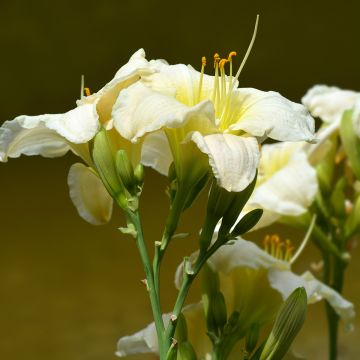
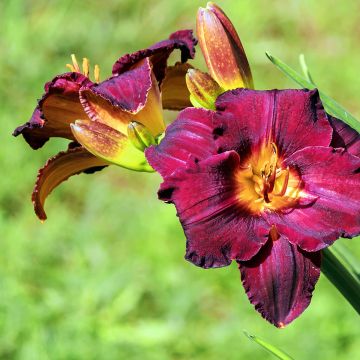
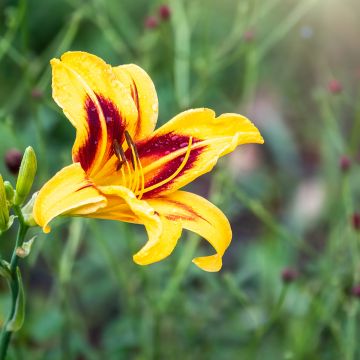
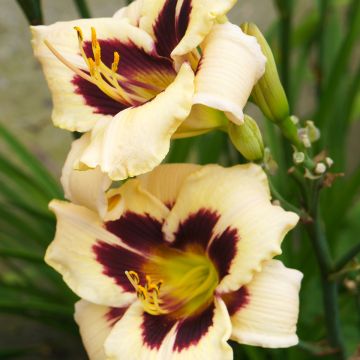
Comments